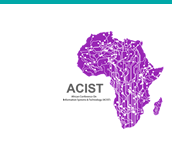Location
Malawi University of Science & Technology, Malawi
Start Date
25-8-2022 10:55 AM
End Date
25-8-2022 11:20 AM
Description
Effective ICT regulation is expected to level the playing field for both investors and consumers through regulatory transparency, independence, pro-competitiveness, consistency, competency and accountability. It is necessary to create an effective regulatory environment that fosters sectoral growth and inspires confidence as an impartial institution. This paper assesses the level of regulatory transparency in developing countries using evidence from the Zimbabwean regulatory framework. The study employs a Qualitative methodology, and Heeks’(2002)Design Reality Gap (DRG) under an interpretivist paradigm. Data collection used in depth interviews with purposively selected stakeholders and analysed using Nvivo (release 1.6.1 (1136)) and thematic analysis shaped by DRG constructs against regulatory transparency. The study makes its contribution by applying the DRG for assessing and evaluating the regulatory transparency gaps in developing countries like Zimbabwe. The findings show a partial DRG gap in Regulatory transparency i.e. narrow gaps in, Resources Utilisation Transparency, Objectives and Values Transparency while Technological Capacitation, Regulatory Processes, Management and Enforcement Transparency were wide. The sector applauded the extensive consultation conducted during the development of statutory instruments but they felt that their contributions were often marginalised by premeditated decisions. Perceptions on Transparency were polarised by public or private sector divides. This confirmed that the flow of information was distributed selectively.
Included in
A Critical Assessment of the ICT Regulatory Transparency Gap in Zimbabwe
Malawi University of Science & Technology, Malawi
Effective ICT regulation is expected to level the playing field for both investors and consumers through regulatory transparency, independence, pro-competitiveness, consistency, competency and accountability. It is necessary to create an effective regulatory environment that fosters sectoral growth and inspires confidence as an impartial institution. This paper assesses the level of regulatory transparency in developing countries using evidence from the Zimbabwean regulatory framework. The study employs a Qualitative methodology, and Heeks’(2002)Design Reality Gap (DRG) under an interpretivist paradigm. Data collection used in depth interviews with purposively selected stakeholders and analysed using Nvivo (release 1.6.1 (1136)) and thematic analysis shaped by DRG constructs against regulatory transparency. The study makes its contribution by applying the DRG for assessing and evaluating the regulatory transparency gaps in developing countries like Zimbabwe. The findings show a partial DRG gap in Regulatory transparency i.e. narrow gaps in, Resources Utilisation Transparency, Objectives and Values Transparency while Technological Capacitation, Regulatory Processes, Management and Enforcement Transparency were wide. The sector applauded the extensive consultation conducted during the development of statutory instruments but they felt that their contributions were often marginalised by premeditated decisions. Perceptions on Transparency were polarised by public or private sector divides. This confirmed that the flow of information was distributed selectively.



